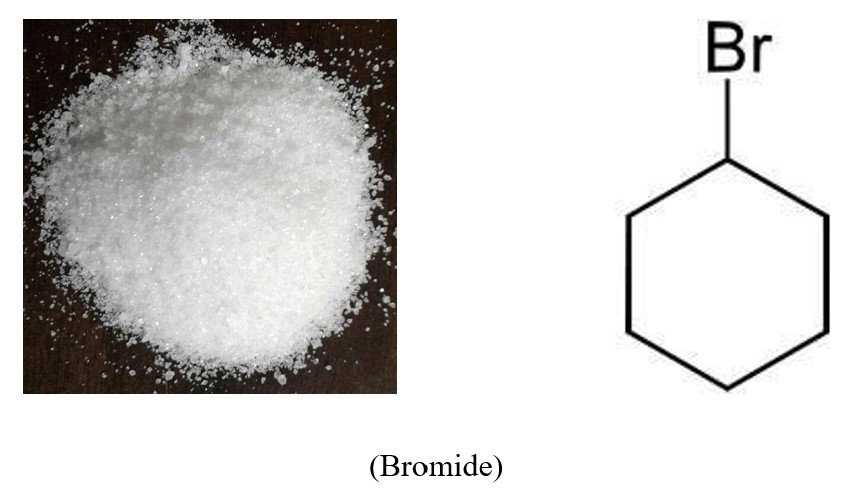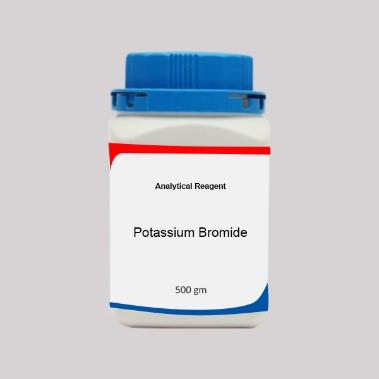Bromides: History, sources, types, applications and hazards
Bromine is located in the periodic table's halogens group, and its negatively charged form (Br) is an ion known as a bromide ion. Bromides that are colorless are the most common. Bromides have a wide range of uses, including anticonvulsants, flame retardants, and cell stains. Balard, a chemist, developed bromide, a halide, in 1826. Sir Charles Locock was the first to use it as an anticonvulsant on humans in 1857. Bromide was the sole viable anticonvulsant on the market until the discovery of phenobarbital in 1912.

History
Since its discovery in 1827, scientists have been keen to find out fresh uses for bromine. Potassium bromide, for example, was quickly adopted as a sedative for conditions ranging from epilepsy to restlessness. By the twentieth century, the term "bromide" had come to be used figuratively to refer to anything or someone so monotonous or commonplace that it may put someone to sleep.
In 1826, Balard discovered bromide, a halide. Sir Charles Locock prescribed it as an anticonvulsant in 1857. Bromide was the sole viable anticonvulsant on the market until the discovery of phenobarbital in 1912. Bromide was first offered to dogs in 1907, but its promise as an anticonvulsant was not found until 1986. Bromide was originally used to treat refractory epileptics in combination with phenobarbital. It has been the only anticonvulsant medication for certain humans and canine patients with hepatic impairment in recent years. Bromide is useful for noncompliant property owners due to its longer half-life. In contrast to the United States, where bromide has yet to be approved for use, it has been approved for distribution in other countries such as the United Kingdom and Australia.
Sources
Bromide concentration in standard seawater (35 PSU) is about 65 mg/L, or around 0.2% of total dissolved salts. It is widely knowledge that seafood and deep sea plants have higher levels than dry land meals. Bromargyrite, a natural, crystalline silver bromide that is still fairly rare, is the most prevalent bromide mineral. Bromine may also be found in minerals such as mercury and copper.
Bromides are present in all people's meals since they occur naturally in minute amounts in soils and rivers (e.g., igneous rock has 0.02 mmol/kg bromide, fresh water contains 0.05 to 10 mmol/L, and saltwater contains 0.4 to 0.8 mmol/L). The use of methyl dibromide and ethylene dibromide in soil fumigation can leave traces of these chemicals in harvested crops.
Potassium Bromide
Potassium bromide (KBr) is a common salt used as an anticonvulsant and sedative. At normal temperature and pressure, potassium bromide is a white crystalline powder. It fully dissolves in water but not in acetonitrile. When potassium bromide is dissolved in water, it has a sweet flavour at low concentrations, a bitter flavour at medium concentrations, and a salty flavour at high concentrations. The potassium ion is primarily responsible for the observed effects in this example; the saltiness of sodium bromide remains constant regardless of concentration. At high doses, potassium bromide is highly irritant to the gastrointestinal mucosa, causing nausea and sometimes vomiting (a typical effect of all soluble potassium salts)

Methyl Bromide
Methyl bromide is a colorless, odorless gas that is used as a fumigant for insect management in agriculture and transportation. Evidence suggests that methyl bromide also contributes to ozone depletion. As a result, with the exception of necessary applications and quarantine and preshipment procedures, the United States has joined the ranks of other countries that have phased out methyl bromide manufacturing and usage.
Ethyl Bromide
Bromoethane, sometimes known as ethyl bromide, is a haloalkane chemical compound. Scientists usually abbreviate it as "EtBr" (which is also used as an abbreviation for ethidium bromide). This volatile chemical has an odor similar to ether. In organic synthesis, EtBr serves as a stand-in for the ethyl carbocation (Et+) synthon. In reality, such a cation does not exist. Ethylation of carboxylate salts yields ethyl esters, carbanion derivatives yield ethylated compounds, thiourea salts yield ethylisothiouronium salts, and amines yield ethylamines.
Lithium Bromide
Lithium Bromide (LiBr) is a chemical compound composed of lithium and bromine. LiBr can be used as a desiccant in some forms of air conditioning due to its extremely hygroscopic nature.
Uses
Bromide's major economic value, both in terms of value and quantity, is found in the production of organobromine chemicals, which is rather specialized. The principal use of organobromine compounds is as fire retardants, however even this application is debatable. Drilling fluid, which requires broad, thick chemicals, and silver-based photography, whose value is falling, are two examples.
Bromide chemicals, particularly potassium bromide, were frequently used as hypnotics in the late nineteenth and early twentieth centuries. Their use in over-the-counter sleep aids and pain medications. Lithium bromide is often used as a desiccant in air conditioning systems and is also utilized in absorption refrigerators on occasion. Lithium bromide can also be used as a catalyst for the oxidation and hydroformylation of organic molecules, as well as the deprotonation and dehydration of these same compounds in some situations. It is used in the medical profession to purify various steroids used in the treatment of illnesses and the decrease of pain.
Hazards
Chronic bromide usage results in a number of neuropsychiatric changes, including the sedative and anticonvulsant effects found with acute dosage. According to medical records examinations, many mid-century mental inpatients were found to have bromide poisoning. 2 Long-term use of bromide-based medications has been associated to "bromide psychosis," a psychotic condition (pyridostigmine, dextromethorphan).
Bromide poisoning, sometimes known as "Bromism," is a chronic disease. This syndrome is caused by long-term therapeutic usage of ammonium, sodium, or potassium bromides as sedatives. Bromism manifests itself clinically as:
Acne-like red papules (Bromine rash) that can progress to a pustular lesion/uncerate over the face, neck, and upper chest.
Recall issues, muscular weakness, and impaired motor control
Personality changes, hallucinations, and delusions are other examples of extreme cases.
Neither the lethal dose nor the time required to kill someone are known with any confidence. Air vapor concentrations must not exceed 0.1 parts per million.